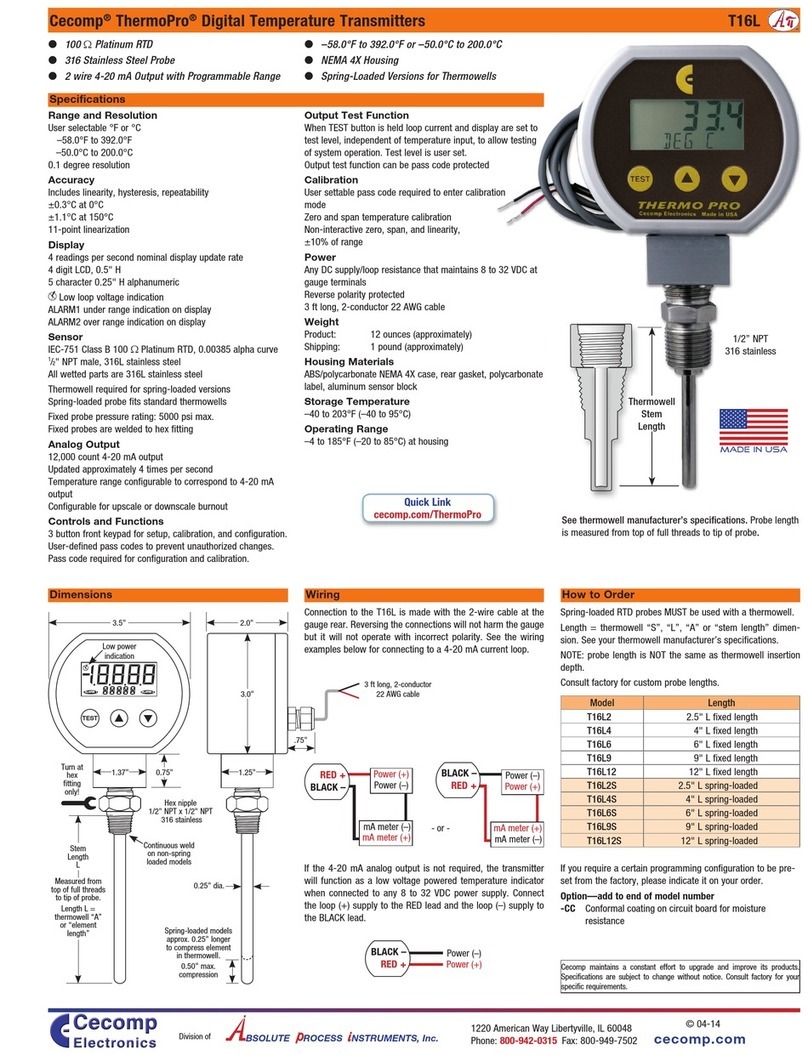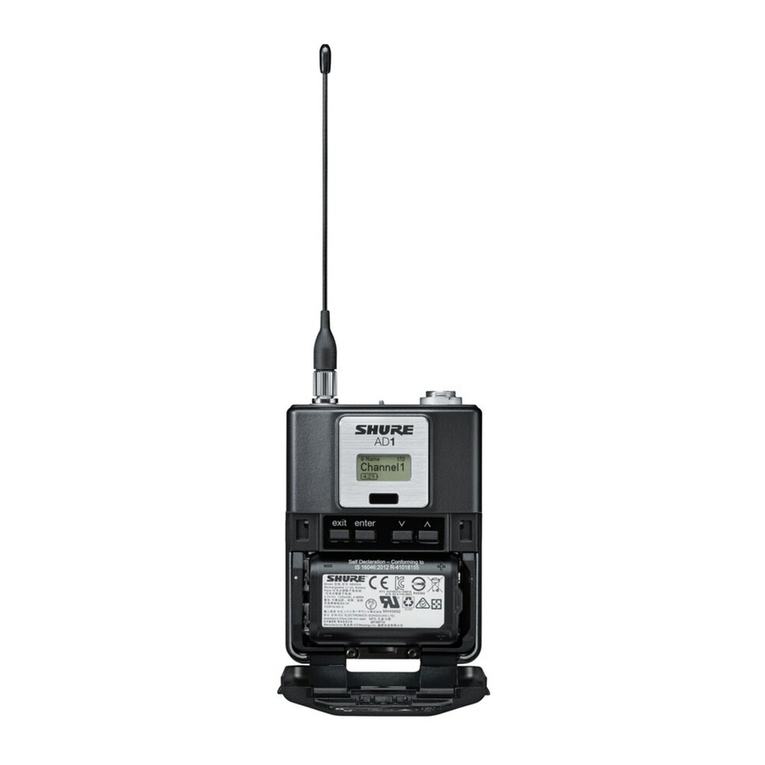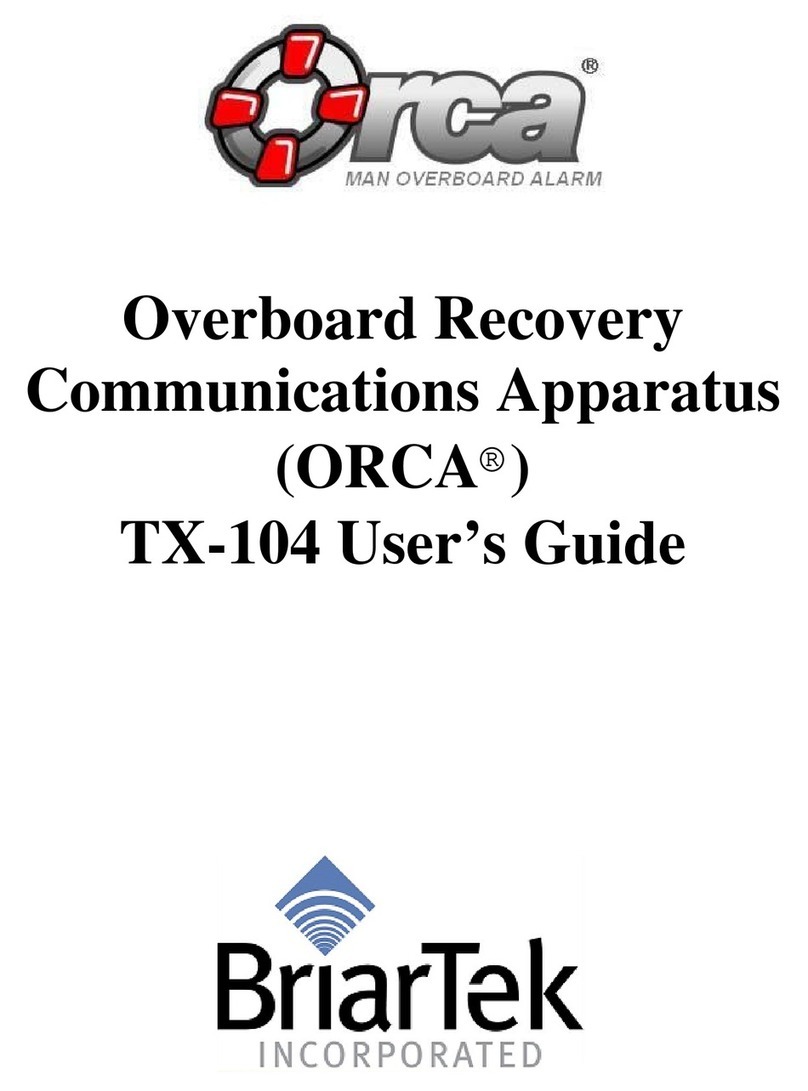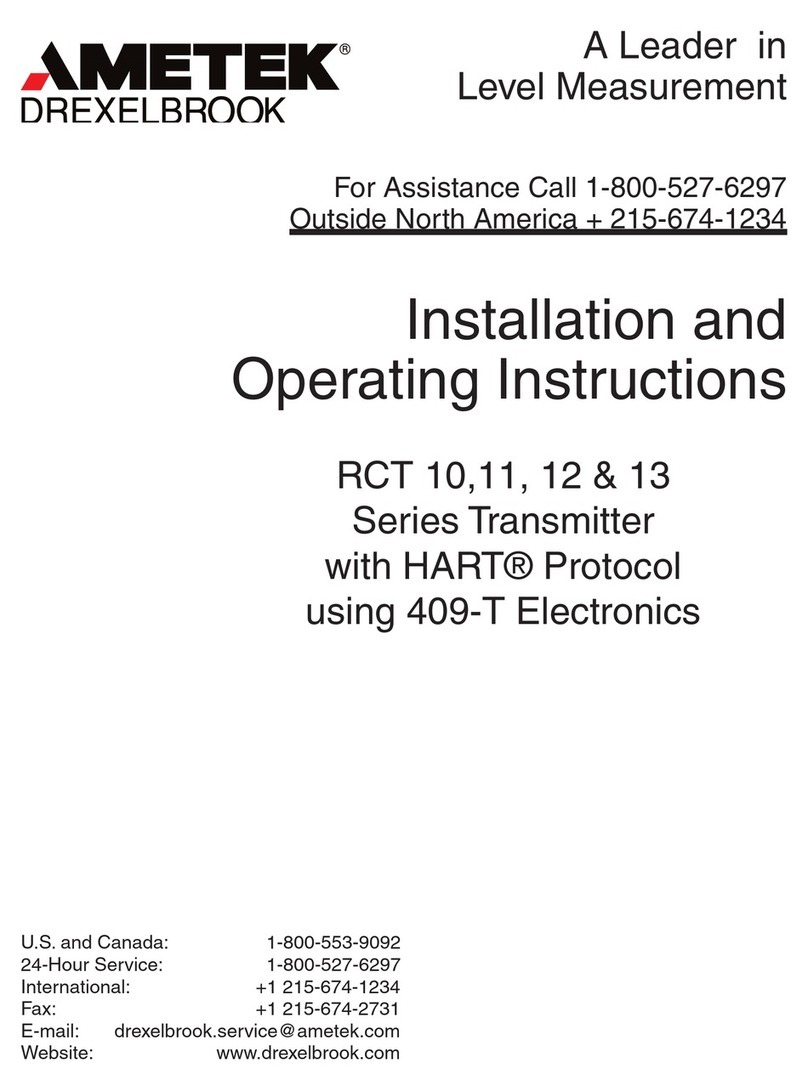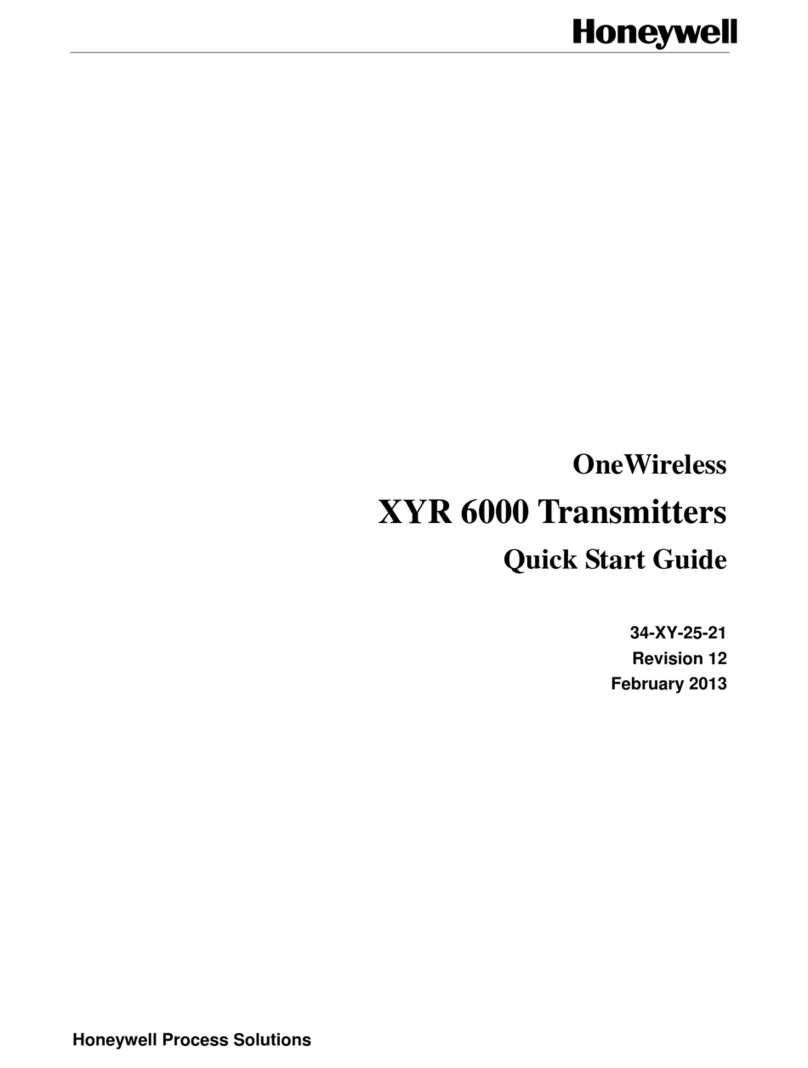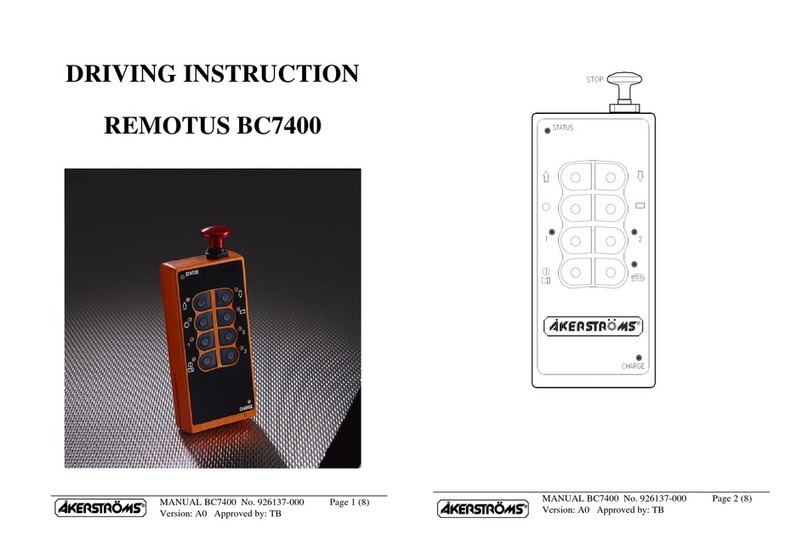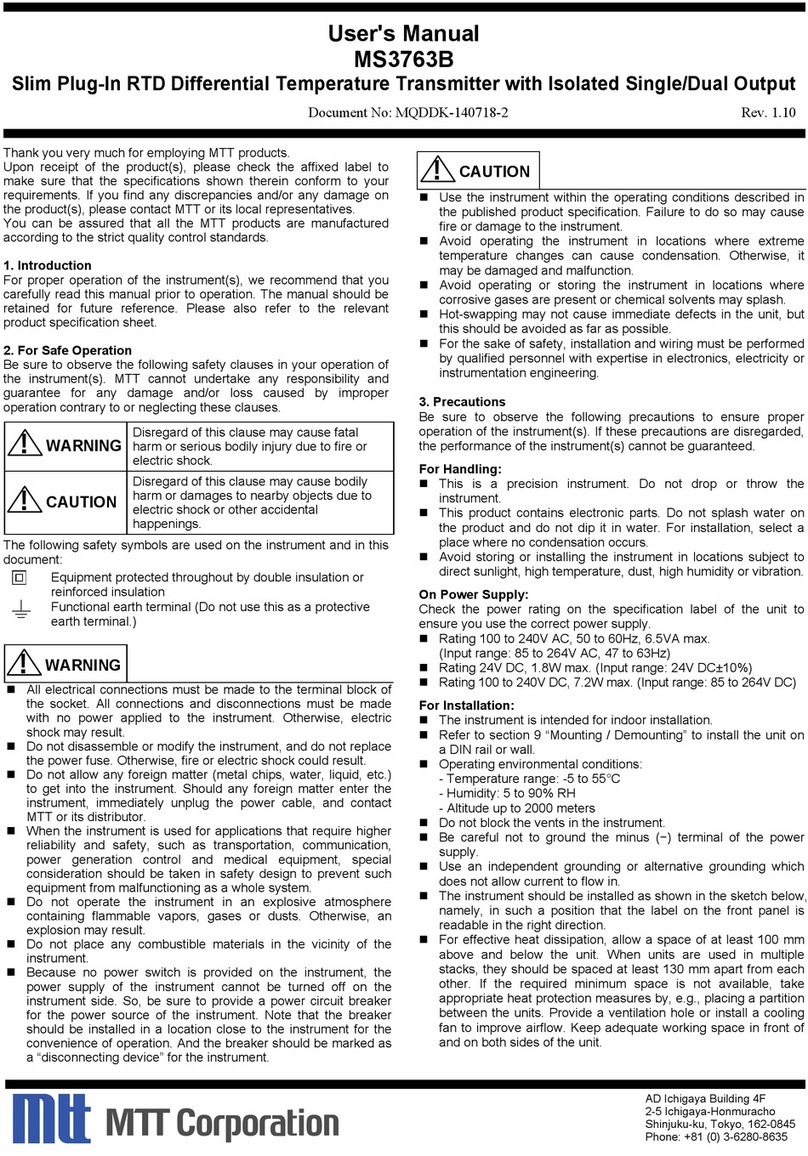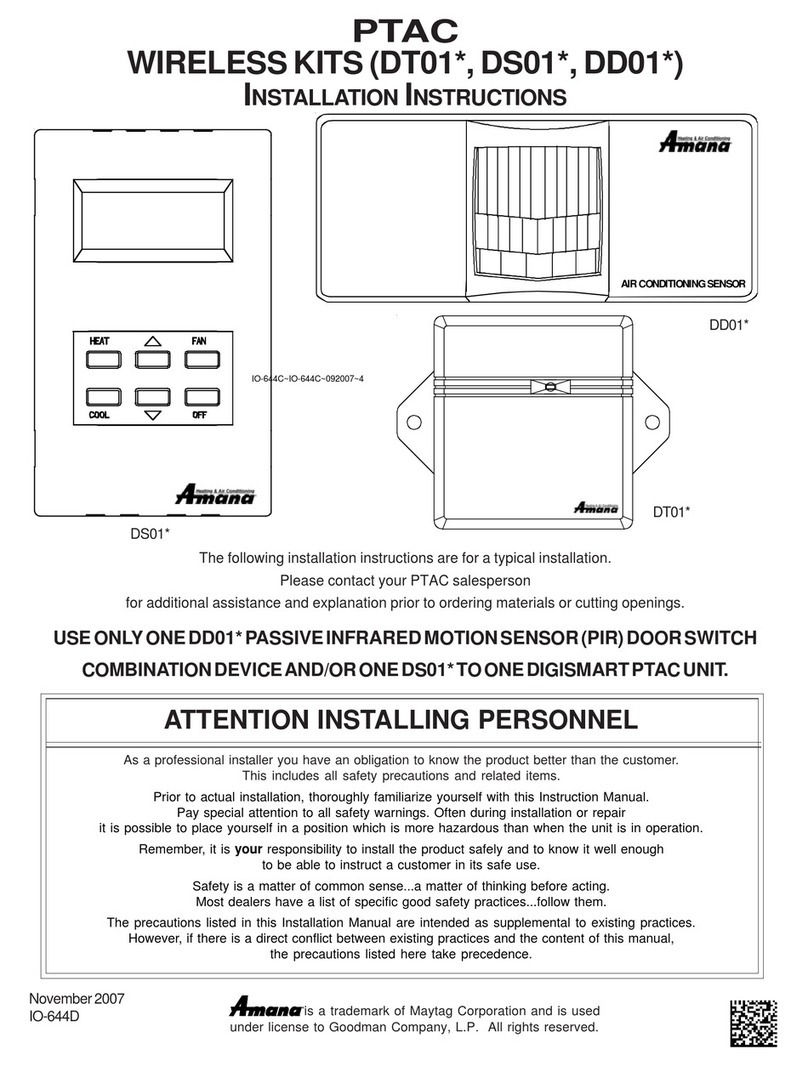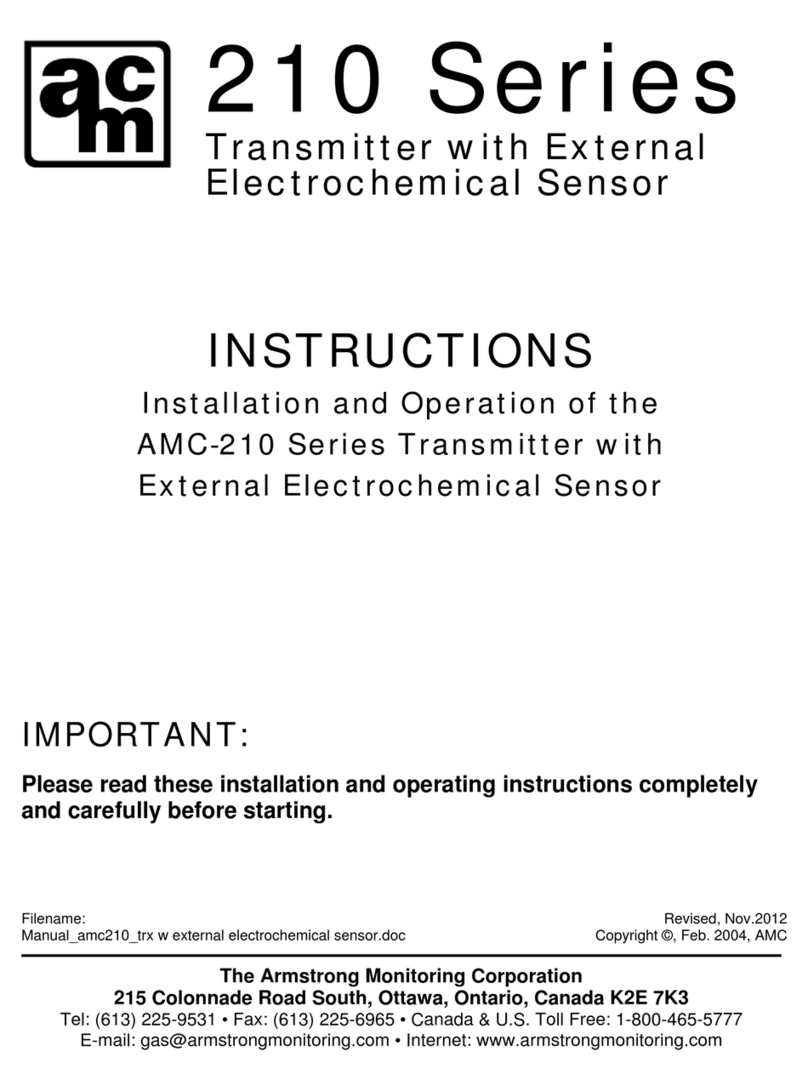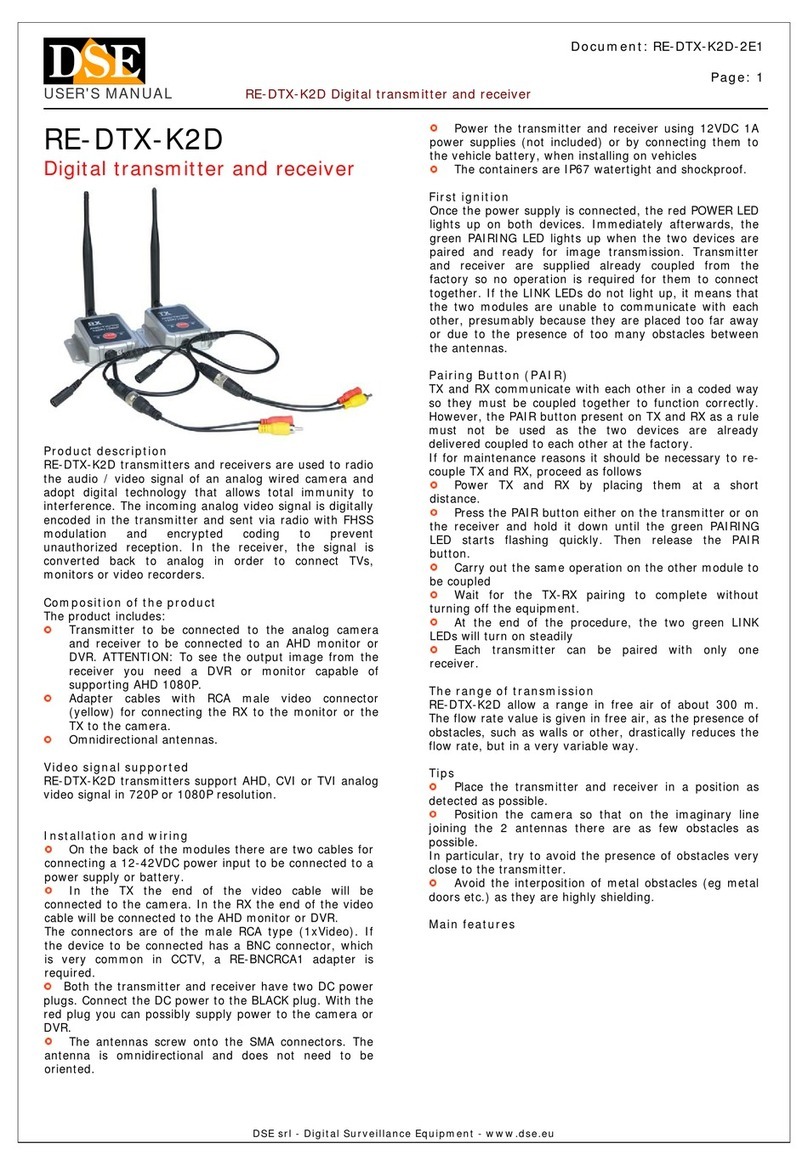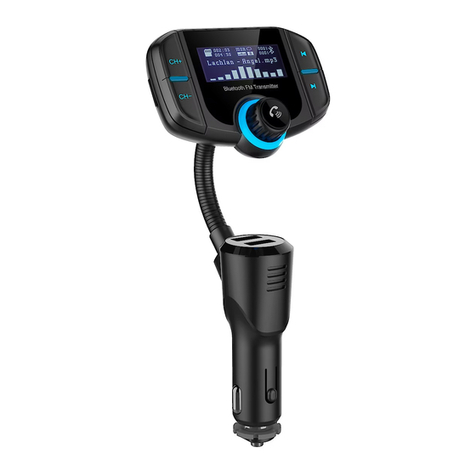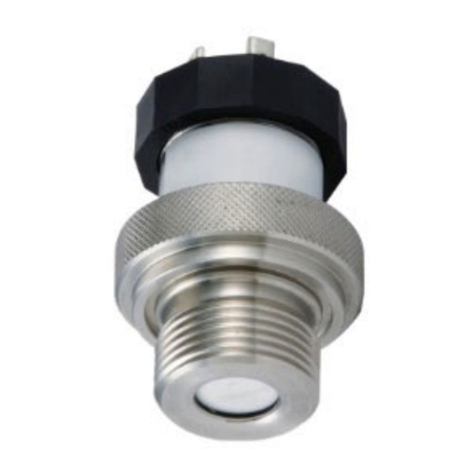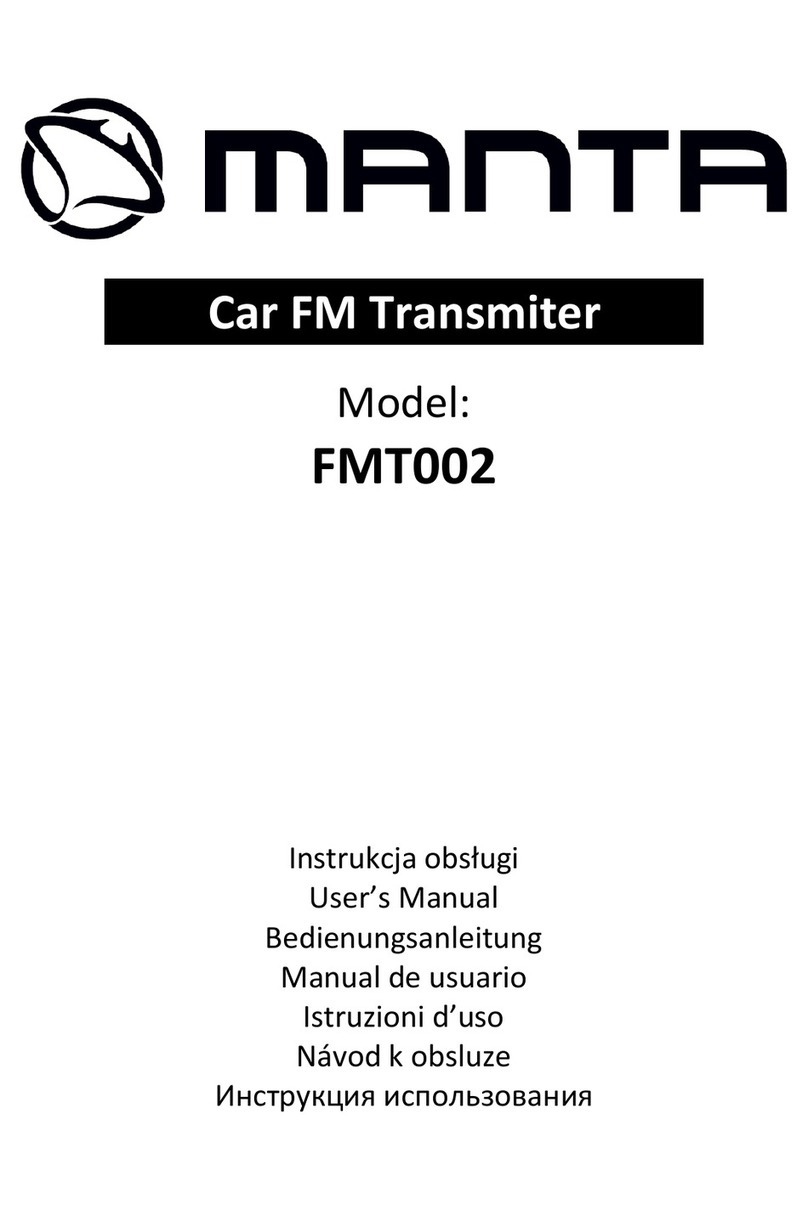Thales Affinity LBD-200C-N1 User manual

A
Af
ff
fi
in
ni
it
ty
y®
®
2
20
00
0-
-W
Wa
at
tt
t
L
LB
BD
D-
-2
20
00
0C
C-
-N
N1
1
L
L-
-B
Ba
an
nd
dD
Di
ig
gi
it
ta
al
lT
Tr
ra
an
ns
sm
mi
it
tt
te
er
r
P
PR
RE
EL
LI
IM
MI
IN
NA
AR
RY
YD
DR
RA
AF
FT
T
P
Pr
ro
od
du
uc
ct
tM
Ma
an
nu
ua
al
l

Safety Notice
In compliance with Federal Regulations, 29 CFR 1910.1200, Material Data Sheets (MSDS) are
provided for each potentially hazardous material supplied. Please review this information
thoroughly.
Document Number: DRAFT
Revision: P1
Date: September 29, 2005
Copyright © 2005 by Thales Broadcast & Multimedia Inc., All rights reserved.
Affinity® is a Registered Trademark of Thales Broadcast & Multimedia, Inc.
No part of this manual may be reproduced, stored in a retrieval system, or transmitted in any form or by
any means, electronic, mechanical, photocopying, recording, or otherwise, except as may be expressly
permitted in writing by Thales Broadcast & Multimedia, Inc.
Information provided by Thales Broadcast &Multimedia, Inc. is intended and believed to be accurate;
however, no liability can be assumed for its use. Materials, designs, and specifications are subject to
change without notice
For technical support call 1-800-345-9295 or log on to our web site at www.thales-bm.com.
Manufactured in the United States of America

Table of Contents - i -
®
Affinity LBD-200C-N1 Transmitter
Product Manual
1 Preface.............................................................................................................................. 1
2 Introduction ....................................................................................................................... 2
3 Safety Information .............................................................................................................3
3.1 Introduction .......................................................................................................... 3
3.2 Warnings, Cautions, and Notes............................................................................ 3
3.3 Safety Symbols .................................................................................................... 4
3.4 Electrical Shock and the Human Body.................................................................4
3.5 Emergency Procedures for Electrical Shock ........................................................ 5
3.6 Transmitter Electrical Hazards ............................................................................. 6
4 Features ............................................................................................................................ 7
4.1 Overview .............................................................................................................. 7
4.2 Affinity® Low Power Transmitter Configurations.................................................. 8
4.3 Affinity® Family Construction ............................................................................... 8
4.4 Additional Affinity® Features: ............................................................................. 11
5 Specifications .................................................................................................................. 12
5.1 Affinity® LBD-200C-N1 Transmitter Specifications............................................ 12
5.2 Affinity® LBD-200C-N1 Cabinet Layout ............................................................. 24
5.3 Affinity® LBD-200C-N1 FRU Part Numbers....................................................... 26
5.4 Fusing and Protection ........................................................................................ 27
5.5 Equipment Packaging ........................................................................................ 28
5.5.1 Unpacking and Inspection ........................................................................... 28
5.6 Environment Considerations .............................................................................. 28
5.7 System Grounding ............................................................................................. 29
6 General System Description ........................................................................................... 30
7 Installation ....................................................................................................................... 32
7.1 Installation of Transmitter Sub-Chassis.............................................................. 32
7.1.1 Installation of Site Management System ..................................................... 33
7.1.2 Installation of Satellite Receiver and Remultiplexer .................................... 34
7.1.3 Installation of Sirius DVB-H Exciter ............................................................. 35
7.1.4 Installation of Driver Plug-In Modules.......................................................... 36

Table of Contents - ii -
®
Affinity LBD-200C-N1 Transmitter
Product Manual
7.1.5 Installation of Power Amplifier Segments .................................................... 37
7.1.6 Installation of Front-End Power Supplies ....................................................38
7.1.7 Installation of UPS System ..........................................................................40
7.1.8 Installation of Downconverter ...................................................................... 41
8 Site Management System Description ............................................................................ 43
8.1 Status Monitoring and Control System............................................................... 43
9 Satellite Receiver and Remultiplexer Description ........................................................... 44
10 Sirius DVB-H Exciter Description .................................................................................... 45
10.1 Introduction ........................................................................................................ 45
10.1.1 Remote Operation...................................................................................... 52
10.1.2 SNMP Agent and Web Server ................................................................... 52
10.1.3 General Description ................................................................................... 55
10.1.4 Main Features ............................................................................................ 55
10.1.5 Sirius Subassembly Description................................................................. 56
10.1.5.1 Digital Board...................................................................................... 56
10.1.5.2 TS Board ........................................................................................... 57
10.1.5.3 Power Supply .................................................................................... 59
10.1.5.4 UHF Synthesizer ............................................................................... 59
10.1.5.5 GPS Receiver.................................................................................... 70
10.1.6 Exciter Rack ............................................................................................... 71
10.1.7 Exciter Connectivity.................................................................................... 72
10.1.8 General Characteristics of Exciter.............................................................. 74
10.1.9 Input/Output Characteristics....................................................................... 75
11 Driver Section Description............................................................................................... 78
11.1 Power Supply Plug-In Module............................................................................ 79
11.1.1 Power Supply Plug-In Module Specifications............................................. 82
11.1.2 Power Supply Module Front and Rear Panel Descriptions ........................ 86
11.2 Upconverter Module ........................................................................................... 88
11.2.1 Upconverter Plug-In Module Specifications ............................................... 93
11.2.2 Upconverter Internal Interconnect Drawing................................................ 96
11.2.3 Upconverter RF Block Diagram ................................................................. 97

Table of Contents - iii -
®
Affinity LBD-200C-N1 Transmitter
Product Manual
11.2.4 Upconverter Module Front and Rear Panel Description............................. 98
11.2.5 Upconverter Module Power-On Sequence............................................... 100
12 UPS System Description............................................................................................... 104
13 Downconverter Module Description .............................................................................. 105
14 Power Amplifier Module Description ............................................................................. 106
15 Front-End Power Supply Description ............................................................................ 117
16 Backplane/Interface Board Description......................................................................... 122
16.1 Front-End Power Supply Backplane ................................................................ 122
16.2 Driver Backplane .............................................................................................. 122
16.3 PA Backplane................................................................................................... 123
16.4 Rear Panel Interface ........................................................................................ 124
16.5 RS-485 Communication Board......................................................................... 125
16.6 Master Support Interface Board ....................................................................... 126
16.7 True RMS Detector Module.............................................................................. 130
16.8 Sub-Chassis Rear Panel.................................................................................. 131
16.8.1 Exciter to UCA Cabling and System Interconnects.................................. 133
17 RF Filter Description .....................................................................................................134
18 Phone System Description............................................................................................ 135
19 Transmitter Cooling Description.................................................................................... 136
19.1 Cabinet Air Conditioning Systems.................................................................... 136
20 Affinity Transmitter Control Systems.............................................................................140
20.1 Automatic Control Systems and Monitoring ..................................................... 140
20.2 Status Monitoring and Control System (SMCS) ............................................... 140
20.2.1 SMCS Functions: ..................................................................................... 140
21 The Affinity® Quick Start Procedure ............................................................................. 143
22 Setup and Detailed Alignment Procedures ................................................................... 145
22.1 Power Limiter & Manual Gain Calibration ........................................................ 145
22.2 Forward Power Calibration............................................................................... 145
22.3 Automatic Level Control ................................................................................... 146

Table of Contents - iv -
®
Affinity LBD-200C-N1 Transmitter
Product Manual
22.4 Upconverter Power Meter Calibration .............................................................. 146
22.5 Reverse Power Calibration............................................................................... 146
22.6 Calibrate Fast Reflected Shut Down ................................................................ 147
22.7 Non-linear Precorrection .................................................................................. 147
22.8 Linear Precorrection ......................................................................................... 148
22.9 Raise & Lower Power....................................................................................... 148
23 Maintenance and Servicing........................................................................................... 149
23.1 Maintenance Procedures ................................................................................. 149
23.2 General Principles............................................................................................ 149
23.3 Recommended Test Equipment....................................................................... 150
23.4 Schedules Maintenance ................................................................................... 151
23.4.1 Monthly Maintenance ............................................................................... 151
23.4.2 Semi Annual Maintenance ....................................................................... 152
23.4.3 Annual Maintenance ................................................................................ 154
23.5 Troubleshooting ............................................................................................... 154
24 Status Control and Monitoring Systems........................................................................ 160
24.1 Parallel Interface .............................................................................................. 160
25 Block Diagrams and Schematics ..................................................................................161
26 List of Acronyms and Abbreviations.............................................................................. 164
27 Warranty........................................................................................................................ 168
28 Parts Lists ..................................................................................................................... 169
29 Appendix .......................................................................................................................170
29.1 Section A- Hazardous Materials List ................................................................ 170
29.2 Section B- Site Drawings.................................................................................. 170
29.3 Section C- List of Modules and Site ID, with Barcode Number ........................ 170
29.4 Section D- Site Acceptance Document ............................................................ 170
29.5 Section E- Log File........................................................................................... 170

Preface - 1 -
®
Affinity LBD-200C-N1 Transmitter
Product Manual
1 Preface
Congratulations on purchasing a Thales Affinity® Transmitter. We would like to welcome you to
the future of digital broadcasting and especially to the Thales Broadcast & Multimedia family.
Your Affinity® is a state-of-the-art low power digital L-Band transmitter. In addition to the
sophisticated on-board diagnostic test and measurement features, major assemblies within the
Affinity® are housed in a convenient modular plug-in package. This modular design philosophy
allows for “Hot Swap” module replacement without the necessity of shutting down the entire
transmitter for long periods. The “Hot Swap” plug-in module feature virtually eliminates costly
downtime.
Before receiving your Affinity®, the transmitter was subjected to a battery of quality assurance
inspections and functional tests to assure years of dependable and reliable on-air broadcasting.
In addition to ensuring that the appropriate support materials are supplied with the transmitter, it
should be comforting to know that Thales Customer Service representatives are only a click
http://csg.us.thales-bm.com or phone call (800-345-9295) away. Check out the volumes of
Thales product support literature, service bulletins, and other related information on our service
web site, and be sure to visit us at our upcoming trade-shows and forums.
Again, thanks for choosing Thales Broadcast & Multimedia as your digital broadcasting partner.
Affinity®LBD-200C-N1 Transmitter

Introduction - 2 -
®
Affinity LBD-200C-N1 Transmitter
Product Manual
2 Introduction
The intention of this Affinity® Product Manual is to familiarize an operator with the setup, basic
operation, and functions of the Thales Affinity® LBD-200C-N1 L-Band Transmitter.
Non-technical personnel should avoid performing any operations and/or procedures contained
within this manual without obtaining the proper training. Semi-technical personnel may perform
the operations and/or procedures appropriate to their skill-level and training.
It is highly recommended that the normal operation, maintenance, and servicing of this
transmitter be performed only by qualified and trained technicians or personnel.
CAUTION: Observe caution while at the transmitter site or while engaged in any transmitter
maintenance. Refer to the Safety section of this manual for additional information on the
dangers and hazardous conditions that are present in and around the transmitter site, and on
the precautions the operator must observe while working within the transmitter area.

Safety - 3 -
®
Affinity LBD-200C-N1 Transmitter
Product Manual
3 Safety Information
3.1 Introduction
The Thales Broadcast & Multimedia Affinity® transmitter conforms to the safety information
contained in the International Electrotechnical Commission (IEC) publication 60215 (1987-06)
(www.iec.ch). The design and manufacturing approach of the transmitter will protect the
operator from dangerous voltages, heat, radiation, and other hazards if operated within the
confines of the specification. Thales has attached warning labels to the enclosures and/or
various assemblies to identify potentially dangerous conditions to the operator. Operators must
adhere to these warning labels.
Thales recommends that only skilled personnel, as defined by the IEC 60215 publication, be
permitted to operate the transmitter. Proper training and correct equipment operation will
remove the risk of hazardous conditions and dangers to the operator.
3.2 Warnings, Cautions, and Notes
This manual contains WARNING and CAUTION notices that identify procedures, conditions,
and materials that could potentially cause death, injury, or damage to equipment.
AWARNING notice will appear before a procedure or instruction if injury or death could result
from performing the procedure or instruction incorrectly.
ACAUTION notice will appear before a procedure or instruction if equipment damage could
occur from performing the procedure or instruction incorrectly.
ANOTE appears after a paragraph to highlight important information.
WARNING
This equipment uses dangerous voltages that
can cause injury or death. Observe applicable
safety precautions.
CAUTION
Do not operate the transmitter with the antenna
and station-load disconnected. Doing so may
damage the transmitter.
Warning and Caution Samples
NOTE: The RF Sample contains pre-distortion and is not representative of output signal. The
RF sample is a reference point for testing only.
Note Sample

Safety - 4 -
®
Affinity LBD-200C-N1 Transmitter
Product Manual
3.3 Safety Symbols
Assemblies within the transmitter system that contain high voltage conditions have safety
symbols attached to them.
HIGH VOLTAGE
This symbol identifies the presence of high voltage that can cause injury or death.
3.4 Electrical Shock and the Human Body
Electrical shock or electrocution occurs when the body becomes part of an energized electrical
path and this electrical energy passes through the body.
The body subjected to a difference of potential, or stored electrical charge causing current to
flow through the body, will be shocked or electrocuted. Effects of electrical shock may include
severe burns to the skin and/or internal organs and respiratory or cardiac arrest. Any electrical
current that flows through the central nervous system of the human body has the potential to
cause serious injury or death.
Severity of electrical shock depends upon the source and duration of exposure. Use the
following information in conjunction with a vigilant and on-going safety program. This information
is in general terms and does not include unknown variables that may increase susceptibility to
electrical shock. Always exercise Awareness and Caution.
Direct Current (DC): Low voltage (up to 72 VDC) usually does not present a hazard to human
life, but a severe burn is possible under some conditions. Medium and high voltage (greater
than 72 VDC) can cause severe shocks, burns, and even death.
Alternating Current (AC): At commercial frequencies (50-60 Hz) and intermediate voltages (72
to 600 VAC), lethal current can flow through the body. Even low AC voltages (24 VAC or less)
under certain circumstances can be dangerous and lethal. The danger of shock is less at high
frequencies, but radio-frequency (RF) burns are possible.
Body Resistance: The resistance of the body and the amount of insulation between the body
and electrical earth-ground determine the amount of electrical current that passes through the
body. The skin presents the greatest resistance of the human body to impede current flow.
Please note that skin resistance decreases with increased voltage.
Time of Contact: The length of time the body remains in contact with electrical current
determines the severity of possible injury. Burns break down the skin and thus lowers the body’s
ability to resist electrical current. The more extensive the burn, the less resistance the skin
provides. As current flow increases, so does the severity of the shock. The duration of contact is
critical. Current flowing through the body causes loss of muscle control, chest contractions
(breathing is impaired) and ventricular fibrillation of the heart. During fibrillation, the heart cannot
pump sufficient quantities of blood.
Magnitude: The magnitude of the electrical current determines the extent of muscle-control
loss, effects on the heart, and severity of burns.

Safety - 5 -
®
Affinity LBD-200C-N1 Transmitter
Product Manual
Path: The path of the electrical current through the body is critical. When current passes from
hand to hand, or hand to foot, the brain, heart, lungs, and spinal cord, which become part of the
electrical path, are affected.
Age and Condition of Victim: The age and physical condition of the victim affects the severity
of electrical shock. Elderly victims, young children, or those with existing medical conditions, are
more susceptible to injury caused by electrical shock.
3.5 Emergency Procedures for Electrical Shock
Anyone engaged in electrical or electronic work should be aware of the proper safeguards and
emergency procedures related to hazardous electrical conditions. An understanding and
knowledgebase regarding electrical hazards will reduce the risks and dangers of electrocution.
Obtaining safety related training courses such as First Aid and CPR, and applying them during
emergencies, might greatly reduce the effects of electrically induced injuries.
Promptly report to the appropriate personnel any electrical “popping” or sparking, and any
noticeable defects or hazardous conditions that can cause injury, property damage, or
interference to the electrical equipment.
Immediately report any electric shock received to the appropriate supervisor or safety
personnel.
In the event that an individual comes into contact with a live electrical circuit:
x Cut off the power. Learn how to remove power anywhere within the work area.
x Free a victim from a live circuit. If a person is “frozen” to a live electrical contact,
turn off the power if possible. If you cannot turn off power, use wooden boards,
poles, sticks, a belt, dry rope, articles of clothing or some other nonconductive
material of sufficient strength to pull the affected person from electrical contact.
x Contact emergency personnel. Immediately contact emergency medical
personnel. Only qualified and trained personnel should perform First Aid
procedures.
WARNING
Under no circumstances touch a victim
exposed to a live circuit. Doing so will place
you in the live circuit, and may result in
injury or death due to electrocution.
Victim in live circuit Warning

Safety - 6 -
®
Affinity LBD-200C-N1 Transmitter
Product Manual
3.6 Transmitter Electrical Hazards
WARNING
Use appropriate practices when working
near high voltage. The removal of panels
identified with warning symbols can
expose the mains voltages. These
voltages can cause injury or death.
Transmitter Electrical Hazards Warning
The transmitter uses lethal voltages that can cause injury or death. The transmitter assemblies
fully enclose these voltages to prevent accidental contact.
Thales recommends these safe-working practices:
x Operate and maintain the transmitter according to the instruction manuals.
x Do not allow personnel to work alone on the transmitter.
x Permit only skilled personnel to operate the transmitter. See IEC 60215.
x Ensure personnel know the location of circuit breakers and mains disconnect
switches.
x Ensure the transmitter is OFF, disconnected from the AC mains voltage, and
secured via a lock-out/tag-out process before working in any areas identified with
warning symbols.
x Ensure all personnel have training in First Aid and CPR procedures.

Features - 7 -
®
Affinity LBD-200C-N1 Transmitter
Product Manual
4 Features
4.1 Overview
The Thales Broadcast & Multimedia Affinity® is an advanced low power solid-state Coded
Orthogonal Frequency Division Multiplexing (COFDM) Digital Video Broadcast-Terrestrial (DVB-
T/DVB-H) transmitter. The Affinity® is fully compliant with European Telecommunications
Standards Institute (ETSI) EN 300744 DVB-T, EN 302304 DVB-H specification requirements,
and complies with all FCC requirements. The design goal of the Affinity® family of transmitters
was to allow broadcasters to cost effectively begin broadcasting in DVB-T/DVB-H formats while
accomplishing the following objectives:
Optimum signal performance in all operating modesx
x
x
x
x
Maximum redundancy for 100% power output
Ease of initial setup and operation
Ease of monitoring and diagnostics
Flexible solutions for all site layouts and installations
The Affinity® L-Band solid-state low power transmitter is available in several models providing
output powers ranging from 50 to 400 Watts average (rms). The transmitter brand can house up
to sixteen high-gain full-band GaAs FET amplifier modules operating in parallel. The quantity of
amplifiers installed for a system is determined by the desired output power.
Each Affinity® transmitter is provided with a DVB-H RF Sirius Exciter containing linearization
circuits to compensate for both linear and non-linear distortions. The correction can be operated
in an adaptive mode allowing automatic compensation and signal optimization.
The Affinity® family of solid-state low power transmitters includes an advanced control system
providing enhanced monitoring and diagnostic capability. The single or dual drive configuration
determines the operating interface for the system.
For single drive (SD) configurations, the front panel of the DVB-H RF Sirius Exciter includes a
Local Control & Monitoring Panel (LCMP) with a man-machine interface (MMI). The MMI
consists of a front panel Liquid Crystal Display (LCD) and a soft-key activated menu that
provides transmitter controls, power readings and alarm indicators.
For dual drive (DD) operation, each of the DVB-H RF Sirius Exciter units are controlled by an
external Central Processing Unit (CPU) that includes switchover management for a Web server
or SNMP agent. The LCMP for dual drive operation consists of a color touch screen with menus
and bar graph.
Remote operation for both configurations can be made by either an embedded Web server
through a standard browser, or through a SNMP agent by means of an SNMP manager.

Features - 8 -
®
Affinity LBD-200C-N1 Transmitter
Product Manual
4.2 Affinity® Low Power Transmitter Configurations
There are three basic transmitter configurations available:
Single Drive – One exciter/driver chain drives the power amplifiers in parallel. This configuration
includes options for N+1 power supply.
Dual Drive – Two exciter/driver(s) operating in a main/standby automatic switching mode drives
the power amplifiers in parallel. This configuration includes options for N+1 power supply.
Diversity Transmitter – This configuration can feed four antennas in 90osectors. There are two
independent single drive transmit chains fed by a common exciter with embedded time delays
on each output. The exciter time delay function is defined in the DVB-H standard, EN 300744.
The delay must be within the guard interval defined in the network, and should add a few
microseconds of delay in relation to the other transmitter in the site. The timing information can
be sent to the transmitter via the Megaframe Information Protocol (MIP) or can be adjusted
locally in the modulator.
4.3 Affinity® Family Construction
The Affinity®family of low power solid-state DTV transmitters is designed to provide maximum
flexibility for site layout and installation. All of the transmitter chassis are designed to fit in EIA
standard 19” wide equipment cabinets. Outdoor installations are equipped with high quality front
and rear access enclosures. These enclosures maintain security and protection against external
elements. Transmitter systems are available in several configurations based on output power,
redundancy options, and site system requirements.
Single channel, non-redundant transmitter configurations (SD) are sized as follows:
For 50 to 125 watt average output power levels, the upconverter and amplifier are self-
contained in a single 6 rack unit (RU) chassis. The N+1 capable power supply is housed
in a 3RU chassis, and the Thales DVB- T/H RF exciter is contained in a 2RU chassis.
This 11RU transmitter is the most compact Thales Affinity system.
x
x
x
For 200 watts average output power levels, three chassis are used (14RU total). The
upconverter assembly is self-contained in a single 3RU chassis. The power amplifiers
are housed in a 6RU chassis. The N+ 1 capable power supply is housed in a 3RU
chassis and the Thales DVB- T/H RF exciter is housed in a 2RU chassis.
For 400 watts average output power levels, four chassis are used (20RU total). The
upconverter assembly is self-contained in a single 3RU chassis. The power amplifiers
are housed in two 6RU chassis. The N+1 capable power supply is housed in a 3RU
chassis and the Thales DVB- T/H RF exciter is housed in a 2RU chassis.
A dual drive transmitter operating in main/standby configuration (DD) is sized as follows:
The Thales DVB-H RF exciter is contained in a19” 9RU chassis that includes: 2RU chassis for
the DVB-H RF exciters, 3RU chassis that house the CPU board with PSU, the DVB-H RF
Exciter/Up Converter, and the amplifiers interface board. 1RU is used for the fan unit and air
inlet, and 1RU for the dedicated front panel that supports the touch screen and bar graph.

Features - 9 -
®
Affinity LBD-200C-N1 Transmitter
Product Manual
The transmitter uses self-contained ambient forced air-cooling (front to back airflow). All fans
are internal to the chassis. Refer to the Cabinet Air Conditioning section of this manual for
additional details of the LBD-200C-N1 transmitter cooling and environmental control systems.
The transmitter system including all ancillary equipment is housed in a Nema 3R rated
enclosure with approximate dimensions: 74” H x 44” W x 44” D. This self-contained unit features
eyelets for lifting the entire assembly during installation. The base has mounting provisions for
mechanical and electrical attachments to building structures. Equipment access is achieved
through front and rear opening doors fitted with locks and intrusion alarms with remote
signaling. Internal enclosure lights illuminate when any door is opened during maintenance. A
smoke/fire detector with remote signaling is utilized to provide the earliest warning of
catastrophic failure caused by a natural occurrence or other means.
Located inside the enclosure is an EIA standard 19” rail structure system used for rack
mounting each sub system contained in the Affinity® configuration.
The AC distribution system is comprised of: 120/230VAC surge suppression with alarms, two
230VAC outlets, and two 120VAC outlets with separate circuit protection. Four 230VAC utility
outlets are provided along with four UPS protected outlets located along the rear corner of the
enclosure. These outlets are intended to connect transmitter ancillary equipment. An external
disconnect box allows connection of a portable generator. An AC hour-meter will record the
operational hours of the equipment.
A UPS is employed to keep critical subsystems running in instances of temporary AC power
loss. The 230VAC UPS output is capable of 700VA/490W. Storage for the UPS is via two
24VDC extended battery modules capable of providing an output of approximately 210 Watts for
400 Minutes (6.9 Hrs). This power is intentionally distributed to the site management system,
satellite receiver, and DVB-T/H RF exciter to enable status communications from the site, back
to the operations center, to continue while normal operating site power is absent. Having the
exciter and satellite receiver powered up also minimizes transmitter restart times once normal
site power has been restored.

Features - 10 -
®
Affinity LBD-200C-N1 Transmitter
Product Manual
AC Distribution System Panel with AC Hour Meter and IF and RF Sample points
UPS System UPS & Utility outlets
(rear side of cabinet)
Bandpass filter
A bandpass filter with integrated RF probes provides the filtering required to comply with FCC
specifications and to achieve high-level out-of-band emission compliance. A circulator, with
load, also an integral part of the RF system, is mounted internally to the cabinet.
A two side-mounted air conditioner unit will provide environmental stabilization for the
transmitting system. A temperature sensor with remote signaling monitors and reports out of
tolerance internal operating temperatures. Weatherproof coax and AC entry ports located on the
side of the cabinet provide for easy access during installation. Critical IF and RF sample points

Features - 11 -
®
Affinity LBD-200C-N1 Transmitter
Product Manual
used for monitoring and troubleshooting are accessible internally from the front-side of the
cabinet. All service and external interface points are easily accessible through the front, rear
and left side of the cabinet. The right side of the cabinet is intentionally left blank for installation
near a build wall or similar structure. Most field replacement units are front-loaded. Each cabinet
assembly is designed to fit through typical building service entries requiring no major structural
changes for installation. An optional rain shield can be provided to aid in protection against a
sudden change of weather during maintenance; however for safety reasons maintenance in
poor weather is not suggested nor recommended by Thales. Refer to the cabinet layout
diagrams in the Block Diagram and Schematics section of this manual for further detail.
The modulator supports 2k, 4k & 8k operating modes, and is well suited for Multi Frequency
Networks (MFN), Single Frequency Networks (SFN), and Hierarchical operation. The modulator
has been seamlessly integrated as part of the Affinity® transmitter
Each Affinity® L-Band transmitter incorporates GaAs amplifier architecture.The Affinity®
transmitter is integrated with the most advanced heat sink technology, and the integral forced
air-cooling system of the Affinity® virtually eliminates the need for external blower units. The
Affinity® line of transmitters are fully compatible with DVB-H standards and feature advanced
embedded software for alignment and system management.
4.4 Additional Affinity® Features:
Advanced embedded microcontroller design; all transmitter performance adjustments
are programmable and password controlled.
x
x
x
x
x
x
x
x
x
x
x
No mechanical tuning required.
Software setup and control via front panel RS-232 communication ports and/or Local
MMI.
Built-in RS-485 network hardware used to interface control and monitor systems.
SNMP, Web Server, etc.
Built-in diagnostics with front panel Liquid Crystal Display (LCD) status display.
Controlled fold-back VSWR protection. Fast shutdown under extreme reflections.
Soft fold-back of output power under Power Amplifier Segment (PAS) fault conditions.
Modular front panel plug-in design for easy maintenance and repair.
Field Replaceable Unit (FRU) modules are common among the different power levels.
Incorporated “Hot Swap” solid-state final power amplifier architecture
The Affinity® includes an advanced control system that provides for enhanced monitoring and
diagnostic capability. The control system includes a screen-display for detecting and locating
equipment malfunctions and faulty subassemblies. The control system interface consists of a
front panel LCD and a soft-key activated menu. Alarm indicators and normal controls, as well as
power readouts, are available via the display assembly.
The Affinity® transmitter incorporates the Omnitronix SL81 Status Control and Monitoring
Systems (SCMS). (See SCMS section of this manual for operational details.)

Specifications - 12 -
®
Affinity LBD-200C-N1 Transmitter
Product Manual
5 Specifications
5.1 Affinity® LBD-200C-N1 Transmitter Specifications
Parameter Specification Test Conditions/ Notes
Transmitter Output
Average Output Power at the
transmitter output (using RF probe
to sample main output; N-
connector)
54.5 dBm in application with channel
filter
1. Thermal power sensor is
recommended to verify average
output power.
2. Modulated carrier
3. UHF input frequency 670 – 675
MHz
4. UHF input power –18dBm ±3dB
5. UHF input waveform COFDM
DVB-H
6. ALC – ON, AGC – ON
7. Linearization – ON
Average Output Power at the
channel filter output (using RF
probe to sample main output; N-
connector)
53 dBm assuming 1.5 dB insertion loss
of the circulator, channel filter, RF
probes and jumper cables
1. Thermal power sensor is
recommended to verify average
output power.
2. Modulated carrier
3. UHF input frequency 670 – 675
MHz
4. UHF input power –18dBm ±3dB
5. UHF input waveform COFDM
DVB-H
6. ALC – ON, AGC – ON
7. Linearization – ON
Out of band Intermodulation
Products / Adjacent Channel
Interference
FCC spectral mask definition for the
1670-1675MHz band per FCC
Document 47, Telecommunications:
Part 27, Miscellaneous Wireless
Communications Services:
Section 53, Emissions Limits. Subparts
(i), (a) (4)
Sidelobe power spectral density (PSD)
across 1MHz shall be attenuated below
the TX (PSD) power (P) by 43+10log
(P)
Spectral Mask must be measured at
the output of the channel filter.
TX input has to exceed FCC spectral
mask definition if OEM exciter is used.
For TX compliance shoulder level
typically should be better than 50dB at
breakpoint w/ minimum of 8db non-
linear correction capability.
1. Thermal power sensor is
recommended to verify average
output power. Emissions
measured with spectrum analyzer
or VSA RBW=30kHz VBW=
100Hz
2. Modulated carrier
3. UHF in
p
ut fre
q
uenc
y
670
–
675

Specifications - 13 -
®
Affinity LBD-200C-N1 Transmitter
Product Manual
Parameter Specification Test Conditions/ Notes
MHz
4. UHF input power –18dBm ±3dB
5. UHF input waveform COFDM
DVB-H
6. ALC – ON, AGC – ON
7. 7. Linearization – ON
Out of band Intermodulation prior to
channel filter
Per spectral mask defined as:
Lower
Channel edge falls between 1670-
1670.122875 MHz
Shoulder at 1669.822975 MHz and
lower must bed-32 dBc
Upper
Channel edge falls between
1674.877125-1675 MHz
Shoulder at 1675.177125 MHz and
above must bed-32 dBc
TX input has to exceed FCC spectral
mask definition, if OEM exciter used,
in order for TX compliance shoulder
level typically should be better than
50dB at breakpoint w/ minimum of 8db
non-linear correction capability.
1. Thermal power sensor is
recommended to verify average
output power. Emissions
measured with spectrum analyzer
or VSA RBW=30kHz VBW=
100Hz
2. One modulated carrier
3. UHF input frequency 670 – 675
MHz
4. UHF input power –18dBm ±3dB
5. UHF input waveform COFDM
DVB-H
6. ALC – ON, AGC – ON
7. Linearization – ON
Inband Intermodulation
Intermodulation products shall not
exceed –30dB when comparing portion
of the mean power spectral density of
the wanted COFDM signal relative to
the same portion when “n”-number of
carriers are switched off. Sampled
bandwidth not to exceed bandwidth of
carriers removed.
Modulator must have facility to switch
off a block of carriers within the
COFDM signal and have better than –
33dB IM when same test is conducted
at input.
1. Thermal power sensor is
recommended to verify average
output power.
2. One modulated carrier
3. UHF input frequency 670 – 675
MHz
4. UHF input power –18dBm ±3dB
5. UHF input waveform COFDM
DVB-H
6. ALC – ON, AGC – ON
7. Linearization – ON
Transmitter Frequency Response,
fixed 5 MHz channel
Relative to the level at ƒcenter shall not
deviate by more than +/-0.5dB across
the frequency range ƒcenter –2.4MHz
to ƒcenter +2.4MHz.
Frequency response is measured at
the output of the channel filter. Test is
done using spectrum analyzer with
modulated input waveform and:
1. UHF input frequency 670 – 675
MHz

Specifications - 14 -
®
Affinity LBD-200C-N1 Transmitter
Product Manual
Parameter Specification Test Conditions/ Notes
MHz
2. UHF input power –18dBm ±3dB
3. UHF input waveform COFDM
DVB-H
4. ALC – ON, AGC – ON (if
spectrum analyzer or VSA is
used; both OFF if network
analyzer method is used)
5. Linearization – ON
Transmitter Group Delay, fixed
channel, 5 MHz wide
Over the frequency range ƒcenter –
2.4MHz to ƒcenter +2.4MHz shall not
exceed +/-200nS relative to the delay at
ƒcenter
Group Delay is measured at the output
of the channel filter. Test is done using
network analyzer broadband detection
from UHF input to channel filter output.
Modulator must compensate +/-100 ns
of delay and:
1. UHF input frequency 670 – 675
MHz
2. UHF input power –18dBm ±3dB
3. IF input waveform COFDM DVB-
H
4. ALC – OFF, AGC – OFF
5. Linearization – ON
Transmitter Carrier to Noise (C/N) t55 dB
C/N is measured at the transmitter
output (no channel filter).
RF Output power, 5 MHz channel,
measurement conditions
1. UHF input frequency 670 – 675
MHz
2. UHF input power –18dBm ±3dB
3. IF input waveform COFDM DVB-
H
4. ALC – OFF, AGC – OFF
5. Linearization – ON
Thermal Noise Power is measured at
5MHz BW at the channel center
frequency.
Measurement is done with Spectrum
Analyzer or VSA using PSD.
Spurious Products
(Undesired signal power 2 dB
higher than the nominal PSD of the
adjacent spectral regions that is
harmonically related to
unmodulated carrier)
d-60 dBc
Relative to nominal modulated power
measured @ 100 kHz RBW at the
channel filter output.
Table of contents

